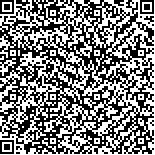| This article has been:Browse 496Times Download 312Times |

scan it! |
|
|
| DOI:10.13522/j.cnki.ggps.2023257 |
|
| Effects of Water and Nitrogen Regulation on Growth, Water-fertilizer Use Efficiency and Soil Water-salt Distribution in Sunflower |
|
HE Rui, TONG Changfu, WANG Jun, QIN Ziyuan, ZHEN Zhixin, GUO Shuhao, WANG Hu, LI Xiaoli
|
|
1. Institute of Water Resources for Pastoral Area, MWR, Hohhot 010020, China;
2. College of Water Conservancy and Civil Engineering, Inner Mongolia Agricultural University, Hohhot 010018, China;
3. Water Utilities Development Center of Wushen Banner, Ordos 017300, China
|
| Abstract: |
| 【Objective】The aim of this paper is to propose a reasonable water and fertilizer application system for the Yellow River water drip irrigation project in the salinized irrigation area on the South bank of the Yellow River in Ordos Dalat Banner.【Method】The field drip irrigation experiment was carried out, and three irrigation quotas were set : high water W1 (1 500 m3/hm2), medium water W2 (1 200 m3/hm2) and low water W3 (900 m3/hm2). Two fertilization levels: high fertilizer N1 (187.5 kg/hm2), low fertilizer N2 (150 kg/hm2). The local irrigation and fertilization were used as the control group CK. The effects of different water and fertilizer treatments on sunflower growth index, yield, soil salinity and soil moisture content were studied. The entropy method was used to calculate the weight of five indexes, including yield, water productivity, partial fertilizer productivity, average conductivity of 0 ~ 40 cm soil layer and fruit rate. The optimal water and fertilizer scheme was obtained by comprehensive evaluation of each treatment. 【Result】There was little variability in sunflower growth trait indexes among treatments, but all were more favorable than the CK treatment. The yields of the two treatments with high water were significantly higher than the other treatments. Throughout the reproductive period of sunflower, W1N2 treatment had the lowest value of electrical conductivity in the 0-40 cm soil layer, 341.9 μS/cm, and W2N1 had the highest value of soil electrical conductivity under water and fertilizer conditions, 449.7 μS/cm. The increase in electrical conductivity at the beginning and end of the reproductive period in W1N1, W1N2, W2N1, W2N2, W3N1, W3N2, and CK was 62.2%, respectively, 29.4%, 58.9%, 52.9%, 83.9%, 56.3%, and 54.0%, respectively. For the water content of the 60-100 cm soil layer, there was no significant difference between the high water treatment and the medium water treatment, and there was a significant difference between both the high water and medium water treatments compared to the low water treatment. Water infiltration in the high water treatment was close to uniform infiltration. The depth of the wetted area formed by different irrigation quotas is also different, the larger the irrigation quota, the deeper the location of the wetted area and the larger the wetted range. The entropy value method was used to comprehensively evaluate each treatment, and the optimal result was the W1N2 treatment, and the worst result was the CK treatment. 【Conclusion】The degree of soil salinity return decreased with the increase of irrigation quota, but too high irrigation quota would reduce crop activity and thus inhibit crop growth. The results of the comprehensive assessment of treatments showed that the irrigation quota for sunflower in the irrigation area on the South bank of the Yellow River in Darat Banner, Ordos, was about 1 500 m3/hm2, and the application of urea (46% nitrogen) was about 150 kg/hm2. During the reproductive period, water was irrigated 5-6 times and fertilizer was applied 2-3 times, and fertilizer was applied to the field with water. |
| Key words: soil water and salinity; soil water and nitrogen; irrigation schedule; mulch drip irrigation; entropy method |
|
|